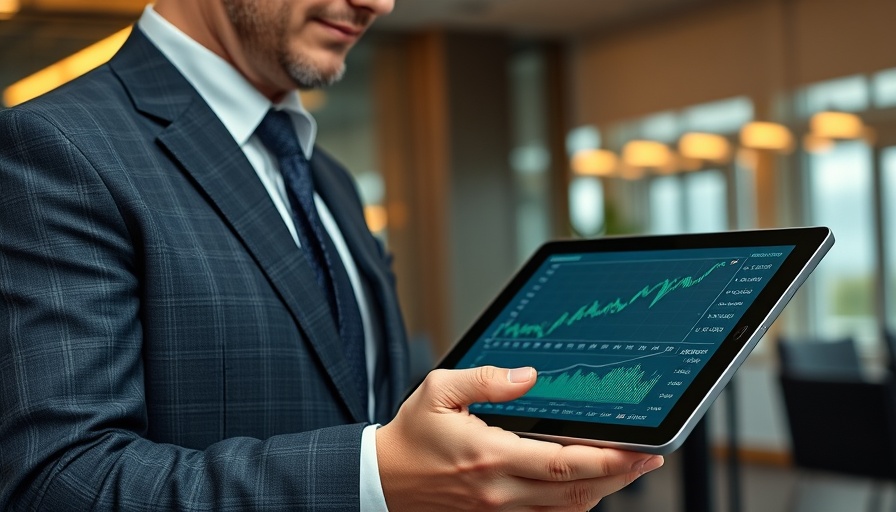
The Urgency of SAP Migration: A Crucial Turning Point for Enterprises
As we approach the 2027 deadline for SAP S/4HANA migration, the stakes have never been higher for companies worldwide. Over 22,000 businesses are currently under pressure to make the switch, a process that could unlock significant operational improvements but also comes with its own set of challenges.
Data indicates that about 61% of SAP customers still rely on outdated ERP systems, highlighting an urgent need for action rather than complacency. Experts indicate that firms that fail to migrate could face dire consequences: loss of official SAP support, diminished access to future innovations, and heightened operational costs. These concerns are particularly pressing in today's volatile economic landscape, where uncertainty looms like a dark cloud over corporate budgets.
The Clash of Roles: CFOs Versus CIOs
At the heart of this migration crisis is a palpable rift between Chief Financial Officers (CFOs) and Chief Information Officers (CIOs). CFOs often focus on maximizing ROI, scrutinizing every dollar spent, particularly during these financially uncertain times. They grapple with multimillion-dollar investments in ERP upgrades that can strain their budgets and lead to uncertainty around ROI.
On the other hand, CIOs face the daunting task of modernizing outdated systems and dealing with poor data quality, which can hinder operations. This division creates challenges in aligning priorities and resources effectively across organizations. Finding common ground is imperative for successful migration.
Ways to Find Common Ground: AI as a Bridge
Interestingly, there’s a beacon of hope that could foster collaboration between CFOs and CIOs: artificial intelligence. A recent survey revealed that 75% of CFOs support increased investment in AI technologies. Automation tools can significantly alleviate financial processes such as e-invoicing compliance, thus driving the overall efficiency of operations during the SAP migration.
By embracing AI, organizations can automate routine tasks, reduce human error, and free up valuable human resources to focus on strategic priorities. This shift holds the potential to transform how finance and IT departments work together, paving the way for a smoother transition during the migration process.
Financial Implications: Understanding the Costs
It’s critical to establish that ERP migrations are not just a technical hurdle; they represent significant financial implications for corporations. Costs can range from $100 million to $500 million based on the complexity of the organization, making it a financial gamble for most firms. The fears of potential downtime and lack of clarity about return on investment can deter many from making decisive moves.
CFOs must manage these potential financial voids by becoming proactive in overseeing invoicing and compliance aspects tied to ERP integration. Financial transparency during this period is essential, ensuring that no resources are wasted in the transition.
Strategies for Successful Migration: Best Practices
Implementing a successful migration involves strategic planning that includes robust training and support initiatives. Organizations must invest in talent to fill the SAP skills gap and ensure that teams have the necessary tools to meet the migration challenges head-on.
Leaders in both finance and IT must prioritize the development of a clear roadmap for their SAP migration plans. This roadmap should encompass comprehensive employee training programs, implementation timelines, and transparent communication structures to engage all stakeholders in the process. Only then can companies minimize disruption and maximize returns in the process.
Looking Ahead: Future Trends in ERP
As companies continue to navigate the evolving landscape of digital transformation, new trends will emerge. The wave of innovations in ERP systems will likely focus on integrating machine learning, natural language processing, and intelligent automation to create truly adaptive systems that respond dynamically to business needs.
Moreover, as companies leverage the most advanced technologies, the importance of a strong cybersecurity framework becomes paramount. Protecting data integrity and adhering to compliance requirements will remain business imperatives in the fast-paced world of ERP migration and transformation.
In conclusion, as the SAP migration deadline looms, aligning the interests of CFOs and CIOs will be vital for harnessing the full potential of this shift. Embracing opportunities offered by AI and ensuring financial transparency could very well turn this migration into a stepping stone for future growth and operational excellence.
 Add Row
Add Row  Add
Add 




Write A Comment